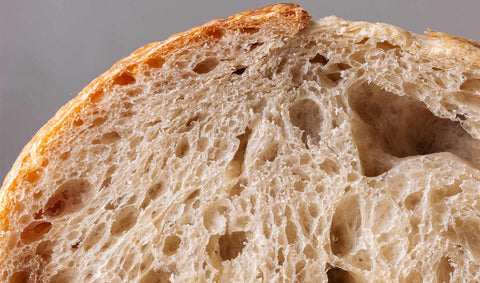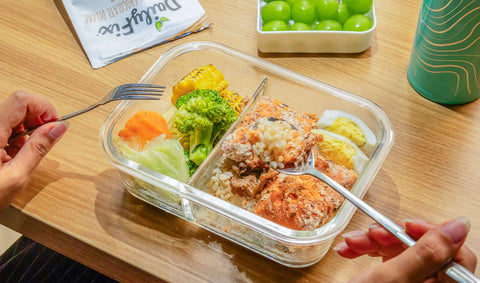Who am I without nostalgia?
I often find myself daydreaming, smiling fondly as cherished memories from long ago resurface. There’s just something magical about the way your mind lets you revisit moments that were once just ordinary, but are now core memories that have shaped you as a person. While nostalgia can come in many forms, sometimes all it takes is one mix, one scoop, and one taste of Halo-Halo—just like that, I’m back in the warm summers of my childhood.
For 13 summers, there was a small stall in our neighborhood that sold nothing but Halo-Halo. It wasn’t fancy—a wooden cart with glass shelves, and a big multicolor umbrella—but there were two things I loved about them: they always opened earlier than everyone else, and they had the best leche flan out there.
On slow, sticky summer afternoons—especially on weekends when the heat was near-unbearable—our family would send someone (usually me, as the bunso) to grab a cup for each of us. We’d stay cool indoors, each armed with our own cup of Halo-Halo, while the local TV channel played our favorite afternoon animé (dubbed in Filipino, of course).
Halo-Halo is an all-time favorite Filipino refreshment—a snack-slash-dessert that’s as colorful as it tastes. Its name literally means “mix-mix” in Filipino because that’s exactly what you do with the treat—and what it’s made of. A classic halo-halo is a combo of diverse ingredients: sweet saging na saba, nata de coco, red beans, gelatin cubes, all topped with crushed ice and garnished generously with creamy leche flan, ube halaya, and a generous scoop of macapuno. Ice cream, usually ube, is sometimes an indulgent finishing touch.
The dessert traces its influences to Japan, inspired by a shaved ice dessert called Kakigori—a simpler treat made of fluffy shaved ice topped with flavored syrup and sweetened condensed milk. Over time, Filipinos gave it their own twist, added delicious ingredients that complement and balance each other, and created the Halo-Halo we all know today.
Longer days in the streets
One spoonful of Halo-halo and suddenly, I'm back running through the sunny streets of my old neighborhood.
As a kid, I believed that summer officially started the second the school year ended. The last school bell was music to my ears: no more homework, no early morning alarms, just longer days of freedom and fun in the streets.
All the neighborhood kids would trickle out of their houses one by one—some clapping dramatically, others whistling with a distinct tone—a signal that it was time to go outside and play. We'd run wild playing tag, langit-lupa, piko, patintero, tagu-taguan, luksong baka—every street game in existence. We'd only pause for lunch, regroup when the sun was just low enough to stop stinging our skins, and play until the sky turned orange and the streetlights flickered to life.
And when the heat was too much to handle mid-game, ice candies would emerge as our saving balm. They were our go-to cooling snack—quick, cold, and delicious. You could pick fruity flavors like mango, avocado, or coconut, or go creamy with cheese or chocolate.
Longer days to explore
Another spoonful of milky, crunchy ice and I'm taken back to childhood adventures and trying new things.
Whenever I saw my sister wheeling out her white bike, I’d drop everything and run after her, shouting, “Wait for me!” I’d hop on the back, and off we'd go for a ride around the block. This was how we discovered the merienda vendors around the neighborhood.
Every street cart stopover felt like a mini field trip: we’d hunt down banana cue or kamote cue stands selling golden skewers of fried bananas or sweet potatoes, coated in sticky caramelized sugar (I always ask for the one with the thickest sugar coating!)
This season also meant trying new things. One summer, our parents enrolled us in badminton class—we'd spend three hours chasing shuttlecocks, learning footwork, and doing more running than actual playing. It wasn’t our usual idea of fun, but the reward after each lesson made it all worth it. After class, we’d march straight to the nearest stall that sells all the con yelos: mais con yelo, saging con yelo, or the classic sago’t gulaman. “Con yelo” means “with ice”: cool and refreshing treats mixed with milk and sweet corn, saging na saba, or tapioca balls and gulaman.
Longer days with the family
The final spoonful—when all the components of my halo-halo have fully mixed together—is a recollection of our summer feasts, when the whole family comes together every summer, huddled around folding tables and monoblock chairs.
Every year, our family would pile into vans—kids excitedly crammed side by side while the adults caught up with each other and took turns behind the wheel. We’d head for beach towns and pool resorts to escape Manila’s heat.
While the kids were busy deciding who gets which floaties, the grown-ups would pack a full-blown mobile kitchen—and I mean they would bring everything: pots, pans, charcoal, food containers filled with ingredients, sauces, and all kitchen staples. Eating out at restaurants was never an option when you have generations of family who know how to cook. My titas were like seasoned chefs, while my titos were born to work a grill. Lola was our head chef.

My eldest Tita, our self-declared menu queen, always took charge. Her “to grill” list always included fresh mussels and shrimp, tomato- and onion-stuffed bangus (milkfish), hotdogs for the kids, and of course, slabs of marinated pork liempo.
Her Inihaw na Liempo (grilled pork belly) was always the highlight of the menu, a staple on every family trip. There were no fancy steps to it, but it was rich in flavor: our family’s liempo marinade was a mix of soy sauce, crushed garlic for that sharp kick, calamansi juice for a hint of tang (and to tenderize the meat), and just the right splash of banana ketchup. It’s a savory-sweet-tangy dish that represents Filipino flavors.
And then there’s the sawsawan or dipping sauce, which we take very seriously in the family. It’s not just a sidekick; it’s the flavor amplifier. For liempo, it’s always vinegar mixed with soy sauce, chopped onions, and raw garlic—a perfect balance to the sweet-savory taste of grilled meat.
While the grown-ups set the lunch table, you’d find me and my cousins splashing around the pool, our faces marked with goggle lines like little koalas. We always knew it was time to eat when the titas started calling our names one by one. Soaked and sun-kissed, we’d shuffle to the table and eat all together.
It all feels like yesterday—those days on the streets, biking around the neighborhood, and swimming on family trips. I live in a different world now, far from the streets that shaped my childhood. My adventures have grown wider, while my time with family has grown shorter. But when I look back, I know I made the most of those days enough to miss them deeply now.
What were once long, summer days as a child become days I long for as an adult. But somehow, every time I get to taste a scoop of halo-halo, a bite of banana cue, and a whiff of grilled liempo, the past returns as if they are time capsules carrying memories of my childhood summers. They remind me that no matter how far I go or how much I grow, the best parts of my summers aren’t lost—they’ve simply found new ways to stay with me.





